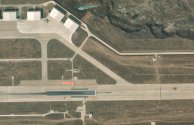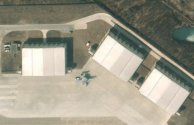You are using an out of date browser. It may not display this or other websites correctly.
You should upgrade or use an alternative browser.
You should upgrade or use an alternative browser.
KJ-600 carrierborne AEWC thread
- Thread starter Blitzo
- Start date
Thanks!! I guess that make sense, single sided because of power and perhaps weight. But if it isn't necessary to for K600 to cover 360 degrees, then it I think each carrier would need to have multiple K600s in the air at the same time to provide enough protective coverage.
It rotates. And it’s mounted on something that flies, around.Thanks!! I guess that make sense, single sided because of power and perhaps weight. But if it isn't necessary to for K600 to cover 360 degrees, then it I think each carrier would need to have multiple K600s in the air at the same time to provide enough protective coverage.
Do the Kj-600 have a radar probably optimized for overwater searching ? It have probably a nice short take off capability that could be interesting in some area over land. Is it possible that it find a way outside naval use?
Another interesting tidbit from that paper is the propellers r counter rotating. If that’s true then that’s a big difference from the E3. But if they r counter rotating, then why does the kj-600 need such elaborate stabilizers?This could be the most accurate length disclosure of KJ-600. 17.555m, taking notes.
Meanwhile, E-2C on wiki says 17.596 m.
Last edited:
The antenna dome of KJ-600 and in the same way E-2 are much larger than E-3 relatively. Their many stablizers are meant for the air turbulence created by the antenna dome. The direction of propeller rotation only create mechenical vibration but not much difference in air flow.Another interesting tidbit from that paper is the propellers r counter rotating. If that’s true then that’s a big difference from the E3. But if they r counter rotating, then why does the kj-600 need such elaborate stabilizers?
[add]
A turboprop moves a much larger volume of air (larger diameter of air column) than a turbofan. The turbulant air flow is closer to the radome in a turboprop aircraft than a trubofan counterpart. So the impact is much severe demanding more area of stablizer.
Last edited:




